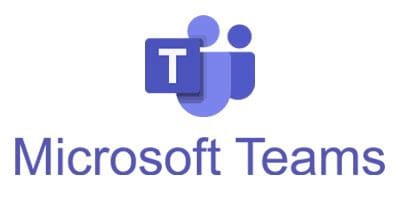How To Install Microsoft Teams on openSUSE

Microsoft Teams has emerged as a vital tool for collaboration, especially in the wake of increased remote work and online communication needs. This article provides a comprehensive guide for installing Microsoft Teams on openSUSE, ensuring that you can leverage its powerful features for effective teamwork and communication.
Understanding Microsoft Teams
Microsoft Teams is a chat-based collaboration platform that integrates with Office 365 and other Microsoft services. It facilitates real-time communication through chat, video conferencing, and file sharing, making it an essential tool for businesses, educational institutions, and remote teams.
Key features of Microsoft Teams include:
- Chat and Messaging: Instant messaging capabilities for quick communication.
- Video Conferencing: High-quality video calls for meetings and webinars.
- File Sharing: Seamless integration with OneDrive and SharePoint for document collaboration.
- Task Management: Tools for organizing tasks and projects within teams.
This guide focuses on installing Microsoft Teams on openSUSE, allowing users to enjoy its benefits directly from their Linux environment.
Prerequisites for Installation
Before proceeding with the installation of Microsoft Teams on openSUSE, ensure that your system meets the following prerequisites:
- System Requirements: A modern version of openSUSE (preferably Leap 15.x) is recommended.
- Sudo Access: You will need administrative privileges to install software packages.
- Updated System: Ensure your system is up-to-date by running the command:
sudo zypper refresh.
Installation Methods Overview
This article covers two primary methods for installing Microsoft Teams on openSUSE:
- Method 1: Installing via the Microsoft repository.
- Method 2: Installing via Snap package manager.
Method 1: Installing Microsoft Teams via the Microsoft Repository
The preferred method to install Microsoft Teams on openSUSE is through the official Microsoft repository. Follow these detailed steps to complete the installation:
Add the Microsoft GPG Key
The first step is to import the GPG key used to sign the packages from Microsoft. Open your terminal and execute the following command:
sudo rpm --import https://packages.microsoft.com/keys/microsoft.ascThis command ensures that your system can verify the authenticity of the packages you will install. You will be prompted to enter your sudo password to proceed.
Add the Microsoft Teams Repository
Add the official Microsoft Teams repository to your system using this command:
sudo zypper ar https://packages.microsoft.com/yumrepos/ms-teams/ ms-teamsThis command adds the repository where the Teams package is located. The alias “ms-teams” will be used for reference in future commands.
Refresh Package Lists
After adding the repository, update your local package database with the following command:
sudo zypper refThis step ensures that your system recognizes the newly added repository and its packages.
Install Microsoft Teams
You can now install Microsoft Teams by executing this command:
sudo zypper install teamsThe terminal will display information about the package, including its size and dependencies. Confirm the installation by typing y, then press Enter.
Launching Microsoft Teams
Once installed, you can launch Microsoft Teams from your applications menu. Press the Super key (Windows key) and type “Teams” in the search bar. Click on the Microsoft Teams icon to start using it.
Troubleshooting Common Issues
If you encounter issues during installation, consider these troubleshooting tips:
- No Package Found Error: Ensure that you have added the correct repository URL and refreshed your package lists.
- Dependency Issues: If there are missing dependencies, try running
$ sudo zypper dup. - Error Importing GPG Key: Check your internet connection or try importing the key again.
Method 2: Installing Microsoft Teams via Snap Package
If you prefer using Snap packages, follow these steps to install Microsoft Teams using Snap on openSUSE:
Install Snapd
The first step is to install Snapd, which is required for managing Snap packages. Run this command in your terminal:
sudo zypper install snapdYou may be prompted to confirm the installation; type y, then press Enter.
Add Snappy Repository
Add the Snappy repository to your system’s repository database with this command:
sudo zypper addrepo --refresh https://download.opensuse.org/repositories/system:/snappy/openSUSE_Leap_15.3 snappyImport GPG Keys for Snapd
You need to import GPG keys for security verification. Execute this command:
sudo zypper --gpg-auto-import-keys refreshUpgrade Package Cache
The next step is to upgrade your package cache to incorporate changes made by adding the Snappy repository:
sudo zypper dup --from snappyEnable and Start Snap Services
You must enable and start Snap services using these commands:
sudo systemctl enable snapd
sudo systemctl start snapd
sudo systemctl enable snapd.apparmor
sudo systemctl start snapd.apparmorThis ensures that Snap services run correctly on your system.
Install Microsoft Teams via Snap Package
You can now install Microsoft Teams using Snap with this command:
sudo snap install teams-for-linuxLaunching Teams from Snap Package
A successful installation will allow you to launch Microsoft Teams from your applications menu. Press the Super key, type “Teams,” and select Teams for Linux.

Troubleshooting Snap Installation Issues
If you face issues while installing via Snap, consider these tips:
- No Snap Command Found Error: Ensure that Snapd was installed correctly and that you restarted your terminal session after installation.
- Error During Installation: Check if there are any existing installations of Teams that might conflict with Snap installations.
- Poor Performance or Crashes: Clear cache or reinstall using Snap if performance issues arise.
Uninstalling Microsoft Teams from openSUSE
If you need to uninstall Microsoft Teams from your openSUSE system, follow these instructions based on how you installed it.
Uninstalling from Repository Installation Method
If you installed Teams via the repository method, use this command to remove it:
sudo zypper remove teams Uninstalling from Snap Installation Method
If you used Snap to install Teams, use this command instead:
sudo snap remove teams-for-linux Troubleshooting Common Issues with Microsoft Teams on Linux
While using Microsoft Teams on openSUSE or any Linux distribution, users may encounter various issues. Here are some common problems along with their solutions:
- The Application Does Not Launch Properly: If you experience issues launching Teams, try clearing its cache by deleting files located in
.config/teams/. You can do this by running:rm -rf ~/.config/teams/* - Error Messages During Login: If you receive error messages when trying to log in, ensure that your internet connection is stable and that you’re using valid credentials. Also, check if there are any service outages reported by Microsoft.
- No Audio or Video During Calls: If you’re facing audio or video issues during calls, check your microphone and camera settings within both your operating system and within Teams settings. Make sure permissions are granted correctly.
- Screenshare Not Working: If screenshare fails during a meeting, ensure that you’re running a compatible version of Linux and that all necessary permissions are granted when prompted by Teams.
- Poor Performance or Lag: If performance issues arise while using Teams, consider closing other resource-intensive applications or checking your network speed. Upgrading hardware may also help if performance remains an issue.
- Error Messages Related to Cache: If you encounter errors related to cache during startup or usage of Teams, clearing cache files as mentioned earlier may resolve these issues. Alternatively, reinstalling may also help resolve persistent problems.
- Bugs or Glitches: If you notice any bugs or glitches while using Microsoft Teams on Linux, make sure you’re running an updated version of both your operating system and application. Reporting bugs directly through Microsoft’s feedback channels can also help improve future versions of their software.
- User Interface Issues: If there are discrepancies in how elements are displayed within the application (e.g., text overlapping), switching between themes (light/dark) may help alleviate visual bugs temporarily until updates are released.
- No Notifications: If notifications aren’t appearing as expected while using teams make sure notification settings within both OS-level preferences as well as team-specific settings are configured correctly.
- Caching Problems: If caching problems arise frequently consider adjusting how often caches refresh based upon personal usage patterns; frequent refreshes could lead towards more consistent experiences overall.
- Error Messages Related To Permissions: If permission errors occur when trying access certain features ensure proper access rights have been granted both at OS-levels as well as within team-specific settings.
- User Account Issues: If user account-related problems persist consider resetting passwords or contacting support directly if unable resolve independently.
- No Updates Available Message: If no updates appear available yet recent changes were made check back later; sometimes updates roll out gradually across different regions based upon server load factors.
- No Connection Error: If connection errors occur double-check network configurations along with firewall settings which might inadvertently block connections.
Congratulations! You have successfully installed Microsoft Teams. Thanks for using this tutorial for installing Microsoft Teams on openSUSE system. For additional help or useful information, we recommend you check the official Microsoft website.